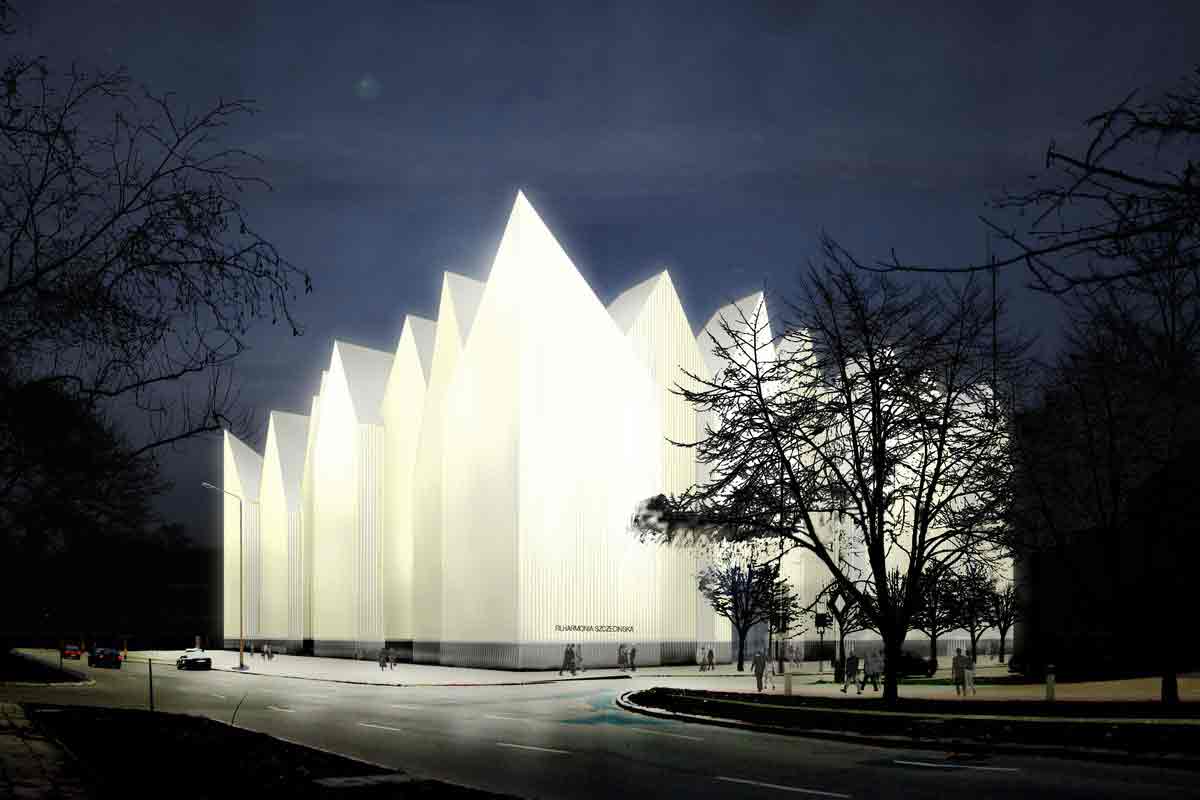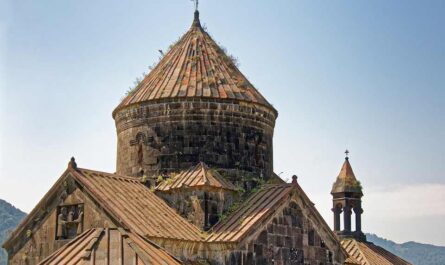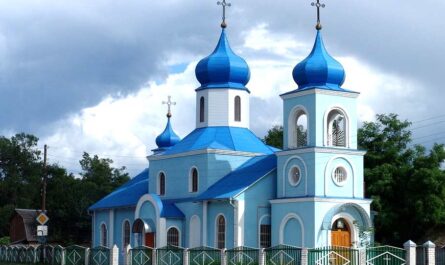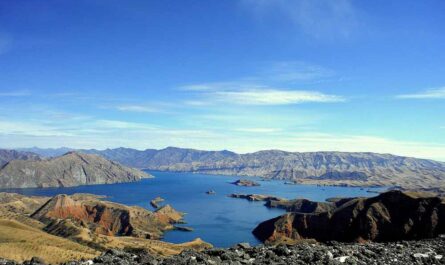Frederick Nietzsche said, “I am thankful for heavens that in all my instincts I stood Polish”. Poland, located in Central Europe, boasts a rich tapestry of nature, culture, and history that captivates visitors from around the world. The country’s diverse landscapes range from the stunning Tatra Mountains in the south to the picturesque Baltic Sea coastline in the north. There are many interesting facts about Poland. Poland’s native population, primarily composed of ethnic Poles, reflects a proud and resilient spirit shaped by centuries of historical events. The country has a strong Catholic tradition, with the majority of the population adhering to Roman Catholicism. A resourceful and peaceful country in Europe, Poland has a flamboyant past and exemplary present, that lures for a thriving future. In this article, I am going to talk about some interesting facts about Poland.
Interesting Facts about Poland: Past, Present, Future
Poland’s multifaceted history, resonating through its anthem and echoing the decisions of rulers like Mieszko, intertwines with its contemporary geopolitical engagements. This intricate tapestry weaves together the threads of cultural identity, political evolution, and international collaboration, portraying Poland as a nation that embraces its past while actively participating in the unfolding drama of the present. Let’s find below some of the interesting facts about Poland:
1. Poland’s National Anthem: Dąbrowski’s Mazurek
Poland, a nation steeped in history and resilience, proudly declares its identity through its national anthem, Dąbrowski’s Mazurek. This poignant anthem, colloquially known as “Jeszcze Polska nie zginęła” (“Poland Has Not Yet Perished”), bears the artistic imprint of Jozef Wybicki, who crafted its verses in the year 1797. It’s a lyrical testament to the indomitable spirit of a nation. Interestingly, this anthem did not originate on Polish soil; instead, it emerged in Italy, a distant setting where Polish troops stood shoulder to shoulder with Napoleon, fostering a unique blend of influences in its creation. This artistic fusion encapsulates the historical intricacies of Poland’s involvement in the tumultuous events of that era.
2. Mieszko: The Dawn of Polish Rulership
Delving into the annals of Polish history unveils the figure of Mieszko, the inaugural ruler whose name echoes through the corridors of time, dating back to approximately A.D. 963. This historical luminary, whose significance cannot be overstated, assumed the mantle of leadership, guiding Poland through its nascent stages. What adds a distinctive hue to Mieszko’s legacy is his pivotal decision in 966 to embrace Christianity. This transformative act not only shaped the course of Poland’s cultural evolution but also positioned the nation as the easternmost bastion within the expansive orbit of Latin culture. Mieszko’s conversion became a cornerstone, forging enduring ties between Poland and the broader European cultural landscape.
3. Poland’s Geo-Political Odyssey: NATO and the European Union
The contemporary chapter of Poland’s narrative unfolds against the backdrop of its geopolitical affiliations. In 1999, Poland, with a resolute nod to collective security, became a member of the North Atlantic Treaty Organization (NATO). This pivotal juncture marked the nation’s commitment to fostering regional stability and collaboration in an ever-evolving global landscape. Subsequently, in 2004, Poland took another momentous step, expanding its integration into the European fabric by joining the European Union. This move not only signified Poland’s embrace of shared values and economic cooperation but also illustrated its aspiration to play a dynamic role in shaping the collective destiny of the European continent.
4. The Demise of the Last Polish Monarch
The concluding chapter of Poland’s monarchical history unfolds with the poignant demise of the final sovereign, Stanisław Poniatowski. This regal figure met his end not in the opulence of a royal palace, but in the stark confines of a jail cell in the heart of St. Petersburg, Russia. The year was 1798, and the somber echoes of a bygone era reverberated through the corridors of incarceration as Poland, once a kingdom of considerable influence, grappled with the inexorable march of time.
5. The Birth of a Republic and Independence Day Tradition
Fast forward to the precipice of a new epoch, November 11, 1918, a moment etched in the annals of Polish history with the declaration of the nation as a republic, unfurling its banner independent of Russia’s dominion. This pivotal juncture in time marks the genesis of a tradition that resonated through the years—a celebration of Independence Day on November 11th. Since its formal institutionalization in 1937, Poles annually commemorate their hard-fought autonomy, a testament to the indomitable spirit that courses through the veins of a resilient nation.
6. Gabriel Narutowicz and the Dawn of Democracy
In the tapestry of Poland’s political evolution, 1922 stands as a harbinger of democratic aspirations, with Gabriel Narutowicz assuming the mantle as the country’s inaugural democratically elected president. This landmark event not only heralded a shift in governance but encapsulated the ethos of a nation seeking a new trajectory. The mosaic of Poland’s facts and information is enriched by this chapter, underscoring the nation’s commitment to forging a path guided by the principles of representative governance—a testament to the vibrancy and dynamism embedded in its historical narrative.
7. Poland’s Dominance in Strength Sports
Poland proudly holds the distinction of producing the most champions in the prestigious “World’s Strongest Man” competition, exemplified by the legendary Mariusz Pudzianowski. This accolade not only underscores Poland’s prowess in strength sports but also highlights the nation’s commitment to physical excellence on the global stage. Pudzianowski’s triumphs serve as a testament to Poland’s rich athletic heritage and the relentless pursuit of victory in the arena of sheer physical strength.
8. A Tapestry of Borders
Nestled in the heart of Europe, Poland is a country that shares its boundaries with no fewer than seven neighboring nations, creating a mosaic of geopolitical connections. These include Russia, Lithuania, Belarus, Slovakia, Ukraine, the Czech Republic, and Germany. This intricate web of borders not only defines Poland’s geographical significance but also shapes its historical and cultural interactions, fostering a dynamic blend of influences that contribute to the nation’s unique identity.
9. Shifting Capitals Through Time
The historical narrative of Poland unfolds through a captivating exploration of its capital cities, each bearing witness to the ebb and flow of the nation’s fortunes. Gniezno, Poznan, Krakow, and Warsaw have all, at various points, served as the epicenters of political and cultural life in Poland. However, the intriguing twist in Poland’s history lies in Lublin, a city that has assumed the mantle of capital not once, but twice—marking distinct periods in the aftermath of both World Wars. This historical oscillation of power underscores the resilience and adaptability embedded in Poland’s narrative, a testament to its ability to navigate through the complexities of time and emerge with renewed significance.
10. Political Landscape in Poland
Poland presently boasts a political landscape characterized by a Parliamentary Republic system, a governance structure where the executive branch derives its legitimacy and authority from the legislative branch. Within this framework, the country’s political decisions and policies are shaped through parliamentary processes, reflecting a commitment to democratic principles and representative governance. This intricate political tapestry underscores the nation’s dedication to fostering inclusive and participatory decision-making.
11. Linguistic Innovation: Esperanto’s Origins
Białystok, Poland, stands as the birthplace of a linguistic innovation that transcended borders — Esperanto. Ludwig Zamenhof, a visionary hailing from this vibrant city, conceived the idea of a universal language designed to foster communication and understanding among people of diverse linguistic backgrounds. His seminal work, “Dr. Esperanto’s International Language,” unveiled in the literary realm in 1887, marked the genesis of Esperanto. Zamenhof’s linguistic creation has since evolved into a testament to the human quest for shared understanding and global unity through a common means of expression.
12. Geographical Magnitude of Poland
Nestled within the heart of Europe, Poland commands attention as the continent’s ninth-largest nation, an expansive territory encompassing 312,685 square kilometers. The country’s geographical expanse not only lends itself to a rich and diverse landscape but also positions Poland as a pivotal player in the European context. From the picturesque Carpathian Mountains to the sprawling Baltic Sea coastline, Poland’s varied topography contributes to its cultural, ecological, and economic significance, fostering a tapestry of experiences within its borders.
13. Historical Adoption of Christianity in the 10th Century
In a pivotal moment of historical significance during the 10th century, Poland underwent a transformative shift as it embraced Christianity. This monumental decision marked a profound cultural and religious transition for the nation, weaving the fabric of its identity with the threads of Christian beliefs. The adoption of Christianity in Poland stands as a testament to the intricate interplay of faith, tradition, and the evolving socio-political landscape of the time.
14. Etymological Roots: The Tribe Title “Polanie”
Delving into the etymological tapestry that weaves the linguistic history of Poland, a fascinating revelation emerges. The very name “Poland” finds its origins in the tribal title “Polanie,” a term encapsulating the essence of a people dwelling in expansive open fields. This linguistic journey unveils a nuanced understanding of the geographical and cultural landscape that shaped the nation’s nomenclature. “Polanie” not only serves as a linguistic artifact but also offers a glimpse into the ancestral connection between the Polish people and the vast, open expanses that define their homeland.
15. Seasonal Nuances: The Coldest Embrace of January
Within the climatic rhythms that sweep across the Polish landscape, a distinctive feature stands out—January, the coldest embrace of the calendar year. This meteorological nuance shapes the experience of the Polish winter, casting a frosty spell over the nation. The biting chill of January encapsulates a climatic paradox, where the harshness of winter intertwines with the resilience of the Polish spirit. It is amidst this wintry landscape that the people navigate their daily lives, creating a unique tapestry of seasonal contrasts and cultural adaptations.
16. Historical Significance of Warsaw as Poland’s Capital
Warsaw, the vibrant and resilient capital of Poland, was not the nation’s initial seat of power. In the rich tapestry of Polish history, this bustling metropolis did not assume the role of capital from the outset. A myriad of historical chapters unfolded before Warsaw claimed its prestigious position as the political and cultural nucleus of Poland. The shift in capitals encapsulates a narrative of evolution, resilience, and geopolitical dynamics that have shaped Poland’s trajectory through time.
17. The Intriguing World Factbook Tidbit: A German Colonel’s Daring Plot
Delving into the pages of the World Factbook reveals a riveting tale that transpired within the borders of Poland. Amidst the tumultuous times of World War II, a German Colonel dared to defy the prevailing order by attempting to assassinate the infamous Adolf Hitler on Polish soil. This audacious act, hidden within the annals of history, underscores the complexities and subplots that unfolded during one of the darkest periods in global history. The plot, though unsuccessful, stands as a testament to the intricate web of events that unfolded in Poland during a pivotal juncture in human history.
18. Pączki: A Sweet Delight Engrained in Polish Culture
Dive into the delightful world of Polish culinary traditions, and you’ll encounter the delectable Pączki—a standard pastry that has etched itself into the hearts and taste buds of the Polish people. More than just a confection, Pączki carries with it the essence of celebrations and cultural festivities. This deep-fried delight, often filled with sweet goodness, stands as a testament to the whimsical side of Polish cuisine. It’s not just a pastry; it’s a sweet indulgence that transcends generations, making it a cherished part of Poland’s culinary heritage.
19. Unearthing Poland’s Capitals Through Time
Before Warsaw’s ascendancy, Poland’s capitals underwent a fascinating evolution. The pages of history reveal a captivating journey through various cities that served as the epicenter of Polish governance. From the medieval grandeur of Krakow to the regal embrace of Gniezno, each capital left an indelible mark on the nation’s identity. Understanding this dynamic shift provides a nuanced perspective on Poland’s political and cultural metamorphosis, encapsulating the ebb and flow of power across centuries.
20. The World War II Resilience of Poland
The tale of a German Colonel’s audacious plot against Hitler in Poland serves as a microcosm of the nation’s resilience during World War II. Poland, caught in the maelstrom of global conflict, faced unprecedented challenges. The attempted assassination, a bold act of defiance, becomes a symbol of the Polish spirit—undaunted and resolute in the face of adversity. Exploring this facet of Poland’s wartime history adds depth to the broader narrative of a nation grappling with the complexities of war and occupation.
21. Geographical Diversity in Poland
Poland, a country nestled in the heart of Europe, boasts a diverse topography with its highest peak, Mt. Rysy, standing proudly at an elevation of 8,199 feet (2,499 meters). This majestic mountain not only punctuates the country’s skyline but also serves as a testament to Poland’s geographical richness. Conversely, near Raczki Elbląskie, Poland experiences its lowest point, a mere 6.56 feet (2 meters) below sea level. The undulating landscapes, from towering peaks to low-lying regions, contribute to Poland’s unique and captivating geography.
22. Historical Turmoil during World War II
Poland, like many European nations, endured the crucible of World War II, facing severe challenges and profound changes during this tumultuous period. The impact of the war on Poland’s landscape, society, and culture was profound. The scars of conflict are etched into the very fabric of the nation, leaving behind a complex tapestry of historical narratives. From the resilience of its people to the physical remnants of wartime destruction, Poland’s World War II experience is a crucial chapter in its intricate history.
23. Prelude to Conflict: Poland’s Role in Hitler’s Expansionist Ambitions
Poland, in the turbulent prelude to World War II, emerged as a pivotal piece on the geopolitical chessboard, serving as a primer for Hitler’s ambitions to unleash all-out warfare. The strategic importance of Poland lay not only in its geographical location but also in its symbolic significance as a gateway to the heart of Europe. Hitler’s calculated aggression towards Poland marked a decisive turning point, setting the stage for a conflict that would reshape the course of history.
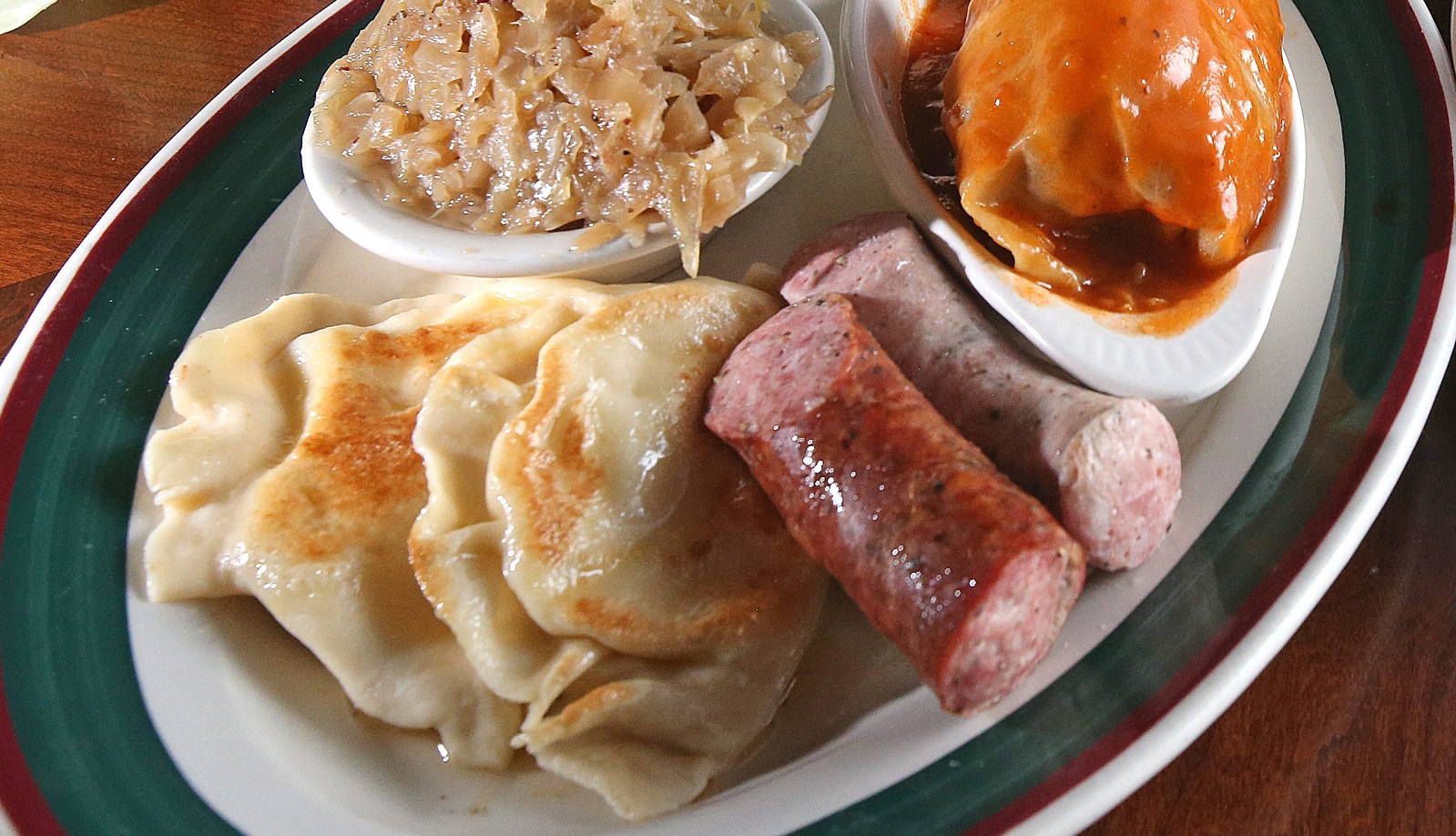
24. Diverse Landscape: The Enchanting Tapestry of Poland
One-third of Poland’s expansive territory is blanketed by lush, verdant forests, creating a picturesque mosaic that captivates the observer’s imagination. In tandem, 50% of the land is meticulously cultivated for farming, contributing to Poland’s agricultural prowess. Amidst this natural grandeur, Poland boasts an impressive network of 9300 lakes, each a shimmering jewel reflecting the country’s rich geographical diversity. Furthermore, the 23 National Parks scattered across the landscape stand as a testament to Poland’s commitment to preserving its ecological heritage.
25. Zloty: Unveiling the Golden Thread of Poland’s Economy
The heartbeat of Poland’s economic transactions resonates through its currency—the Zloty (PLN). The very name, meaning “gold” in Polish, carries an intrinsic connection to the nation’s history and values. Serving as a tangible symbol of financial resilience, the Zloty has weathered economic storms, mirroring the fortitude of the Polish people. Its presence in the realm of commerce and trade underscores Poland’s position as a stalwart player in the global economic arena.
26. Honoring a Nobel Laureate in Warsaw
Warsaw, the capital of Poland, is not only a bustling metropolis but also a repository of cultural and intellectual treasures. Among its many jewels lies the final resting place of a Polish Nobel Laureate, a figure whose contributions to humanity are immortalized within the city’s boundaries. This poignant location serves as a pilgrimage site for those seeking inspiration from the laureate’s legacy. Warsaw, with its historical significance and cultural richness, stands as a beacon, inviting visitors to explore the intellectual gems woven into the fabric of this vibrant city.
27. Exploring Poland’s Intriguing Sites
Beyond its geopolitical and historical facets, Poland beckons explorers with a plethora of fascinating locations. From the towering heights of Mt. Rysy to the historical echoes in Warsaw, the country unfolds as a tapestry woven with diverse and intriguing sites. Every corner tells a story, and every landmark is a testament to Poland’s rich heritage. Whether delving into the geographical wonders or immersing oneself in historical narratives, Poland reveals itself as a captivating destination, inviting curiosity and appreciation for its multifaceted identity.
28. Polish Zapiekanka: A Culinary Delight Sans Tomato Sauce
In the heart of Poland, culinary enthusiasts savor a distinctive treat known as “zapiekanka,” a variant of the globally beloved pizza. Unlike its traditional Italian counterpart, this Polish delight diverges by eschewing the customary tomato sauce. Instead, it takes the form of a cherished street food, elegantly presented on a baguette. The base, a canvas of culinary ingenuity, hosts a delectable amalgamation of flavors—melted cheese, succulent mushrooms, and a tantalizing hint of ketchup. This unconventional twist on the classic pizza narrative reflects the creativity inherent in Polish cuisine, where each bite tells a story of cultural fusion and gastronomic innovation.
29. Pryzstanek Woodstock: Harmonizing Music and Culture
Named in homage to the iconic Woodstock rock festival, Pryzstanek Woodstock stands as a testament to Poland’s vibrant cultural tapestry. This annual extravaganza has evolved into the largest open-air music festival across the European continent, drawing throngs of music aficionados from far and wide. The air pulsates with the rhythm of rock as enthusiasts congregate in a euphoric celebration of music and camaraderie. Pryzstanek Woodstock encapsulates the essence of Poland’s artistic spirit, showcasing the nation’s commitment to fostering an atmosphere where the universal language of music harmonizes with the rich cultural heritage of the land.
30. Pierogi: Polish Culinary Delight
Pierogi, those delectable Polish dumplings, stands proudly as one of Poland’s most iconic culinary offerings, transcending borders and captivating palates worldwide. The mere mention of pierogi evokes images of pillowy dough pockets cradling a myriad of savory or sweet fillings, meticulously crafted to perfection. With their roots deeply embedded in Polish culture, these culinary delights have become synonymous with the nation’s rich gastronomic heritage.
31. Reagan’s Ode to Poland: “Let Poland Be Poland”
In a poignant moment of diplomatic expression, Ronald Reagan immortalized the sentiment of his 1982 speech with the resonant title “Let Poland Be Poland.” The inspiration behind this evocative phrase lies in the protest tune, “Żeby Polska była Polską,” penned by the talented Jan Pietrzak in 1976. A melodic anthem of resilience and national identity, the tune echoed the collective spirit of the Polish people, capturing the essence of their unwavering determination for autonomy and freedom.
32. Vodka Legacy: Poland’s Liquid Heritage
Poland boasts a venerable history spanning over 500 years in the art of crafting high-quality vodka, a spirit that transcends mere libation to embody a cultural legacy. The genesis of Polish vodkas can be traced back to the 11th century when they first emerged under the moniker “gorzałka,” doubling as both elixirs and remedies. The evolution of this liquid gold over the centuries has woven a narrative of innovation and refinement, solidifying Poland’s status as a connoisseur in the world of spirits.
33. Polish Banana Peeling Ritual: Unveiling Nature’s Sweetness
In the enchanting land of Poland, even the seemingly mundane act of peeling bananas takes on a unique twist. The conventional method of peeling from the stem end finds itself overturned, as Poles prefer to unravel the fruit from its blossom end. This peculiar yet deliberate departure from the norm adds an intriguing layer to the daily rituals of the Polish people. By opting for this unconventional banana peeling technique, Poland not only showcases its penchant for individuality but also invites curious observers to contemplate the cultural nuances woven into the fabric of everyday life. Each banana, peeled from the blossom, becomes a subtle embodiment of the nation’s distinctive approach to even the simplest acts of consumption.
34. Leon Uris and the Warsaw Ghetto Uprising in Mila 18
American literary maestro Leon Uris left an indelible mark on the literary landscape with his riveting novel, “Mila 18.” A magnum opus that captured the essence of resilience and resistance, it found its roots in the harrowing tale of the Warsaw Ghetto Uprising of 1943. Uris intricately wove the narrative around the clandestine struggle for survival, centering it on the strategic focal point—the enigmatic Mila 18. This clandestine locale served as the heartbeat of the Jewish Resistance militia, their nerve center in the face of insurmountable odds. The streets of Warsaw echoed with the indomitable spirit of those who defied tyranny, and Mila 18, immortalized in Uris’s prose, became a symbol of courage and defiance in the darkest hours.
35. Marzanna-Making: A Quirky Polish Tradition
In the mosaic of Polish traditions, one stands out as particularly whimsical—the art of Marzanna-making. This quirky custom, deeply rooted in the cultural fabric of Poland, adds a touch of playfulness to the country’s rich tapestry. Marzanna, a symbolic effigy representing winter’s end, becomes the focal point of an age-old ritual. As the vernal equinox approaches, communities come together to craft these effigies with meticulous care. The process involves a dance between tradition and creativity, where each Marzanna takes on a unique character. Once complete, these effigies are ceremoniously burned or drowned, signifying the triumph of spring over winter. It’s a vivid testament to the enduring connection between the Polish people and their cultural heritage.
36. Poland’s Creative Capital: A Haven for Artistic Expression
Beyond its historical tapestry, Poland unfurls as a haven for artistic expression, earning its stripes as a creative capital. The country’s landscapes are not only adorned with picturesque vistas but also serve as a canvas for a vibrant arts scene. From avant-garde masterpieces to contemporary creations, Poland pulsates with the rhythm of artistic innovation. Its cities, such as Warsaw and Krakow, harbor galleries and studios that act as crucibles for burgeoning talent. The fusion of traditional influences with modern perspectives creates a dynamic milieu, making Poland a beacon for those seeking inspiration. This symbiosis of tradition and avant-garde fervor underscores Poland’s status as a bastion of artistic ingenuity.
37. Religious Diversity in Poland
The rich cultural tapestry of Poland is intricately woven with the threads of Roman Catholicism, as a predominant majority of Poles adhere fervently to this religious faith. This intriguing facet of Polish society not only shapes the spiritual landscape but also influences various aspects of daily life, festivals, and traditions. The echoes of centuries-old religious practices resonate in the traditions and customs that bind communities together, adding a distinctive layer to the national identity.
38. Marzanna: A Quaint Polish Tradition
Embedded within the fabric of Polish folklore is the charming custom of Marzanna, a tradition that unfolds with the changing seasons. In this quaint ritual, individuals meticulously craft straw dolls, breathing life into them with vibrant ribbons and symbolic embellishments. These dolls, symbolic harbingers of winter, become integral players in a symbolic drama as the thawing snow signals the arrival of spring. The denouement of this age-old drama is marked by the ceremonial casting of the Marzanna dolls into flowing rivers, a gesture laden with symbolism as it metaphorically signifies the ritualistic ‘killing’ of winter and the emergence of the revitalizing spring.
39. Poland’s Diverse Palette of Traditional Beverages
The cultural richness of Poland extends beyond its religious and folkloric dimensions to encompass a vibrant tapestry of traditional drinks. The nation boasts a cornucopia of libations that have withstood the test of time, each bearing a unique flavor profile that reflects the diverse regions from which they originate. From the robust warmth of mulled wines to the nuanced complexity of herbal infusions, Poland’s traditional beverages are a testament to the nation’s culinary artistry. Delving into this liquid heritage unveils a spectrum of flavors that mirrors the country’s historical tapestry and regional diversity, inviting both locals and visitors to savor the unique tastes woven into Poland’s cultural fabric.
40. Revolutionary Roots: The Father of American Cavalry
In the annals of history, one cannot overlook the remarkable origin of the Father of the American Cavalry, whose roots delve deep into the storied land of Poland. This distinguished figure, instrumental in shaping the equestrian prowess that defined the American military, emerges from the rich cultural tapestry of Poland. The fusion of Polish heritage and the spirit of revolutionary America underscores the interconnectedness of nations in the forging of history. It is a testament to the indomitable spirit that transcends borders, linking the heart of Eastern Europe with the aspirations of a burgeoning nation across the Atlantic.
41. Celestial Cartography: Poland’s Stargazing Luminary
Delving into the cosmos, the astronomical realm unveils another jewel in the crown of Polish achievements. A luminary in the field, an astronomer of Polish descent etched his name in the annals of celestial exploration by crafting the initial maps of the moon. This cosmic cartographer, with a discerning eye cast towards the heavens, meticulously charted the lunar landscape, unraveling the mysteries that had captivated humanity for eons. The celestial symphony found its interpreter in a mind fueled by Polish ingenuity, leaving an indelible mark on the scientific cosmos.
42. Harmonic Genius: Chopin’s Polish Prelude
Embark on a melodic journey through the annals of classical music, and one encounters the prodigious composer Chopin, whose genius found its roots in the enchanting landscapes of Poland. Among the myriad facets of Poland’s cultural tapestry, the resonant chords of Chopin’s compositions reverberate with historical significance. An interesting revelation, tucked away in the intricate folds of Polish history, is the fact that Chopin himself was initially from Poland. This musical luminary, a maestro whose piano keys danced to the rhythm of Polish inspiration, adds yet another layer to the kaleidoscope of Poland’s contributions to the world’s cultural heritage.
43. Vodka as a Medicinal Elixir in Poland
In the culturally rich tapestry of Poland, a peculiar historical facet emerges—the unconventional use of vodka as a form of medicinal therapy. Beyond its conventional role as a recreational beverage, vodka, in some instances, found an unexpected application as a remedy. This intriguing practice, deeply embedded in the Polish cultural narrative, reflects a nuanced approach to spirits. It underscores a unique intersection of tradition, folk wisdom, and perhaps a touch of unconventional medical folklore that has woven itself into the social fabric of the country.
44. Tomato Sauce Absent: A Distinctive Polish Pizza
Embarking on a culinary journey through Poland, one is likely to encounter a peculiar twist to the familiar delight of pizza. In this land where gastronomic surprises abound, the traditional rendition of pizza departs from the widely embraced global norm. Strikingly, the Polish variant of this beloved dish takes an unorthodox turn by omitting the ubiquitous tomato sauce. This culinary divergence invites curious palates to explore the intriguing medley of flavors that emerge when culinary conventions are playfully reshaped, offering a delectable testament to Poland’s inventive spirit in the realm of gastronomy. Cheap but Good Hosting Services Rated by Reviewers
45. Title Days: A Unique Celebration in Poland
Beneath the surface of Poland’s vibrant celebrations lies a distinct tradition that sets it apart—the observance of title days. This cherished practice, deeply ingrained in the social tapestry, presents a fascinating alternative to the more conventional celebration of birthdays. Rather than marking the passage of another year since birth, Poles choose to revel in the commemoration of their namesake saints’ feast days. This peculiar twist in celebration not only reflects the country’s strong Catholic heritage but also showcases the significance of names, intertwining individual identity with religious and cultural narratives. The resonance of this tradition extends beyond mere festivity, acting as a unique lens through which one can glimpse the rich tapestry of Polish culture.
More Interesting Articles
